Life Along Kallidromiou Street in Athens
A stroll down one of the...
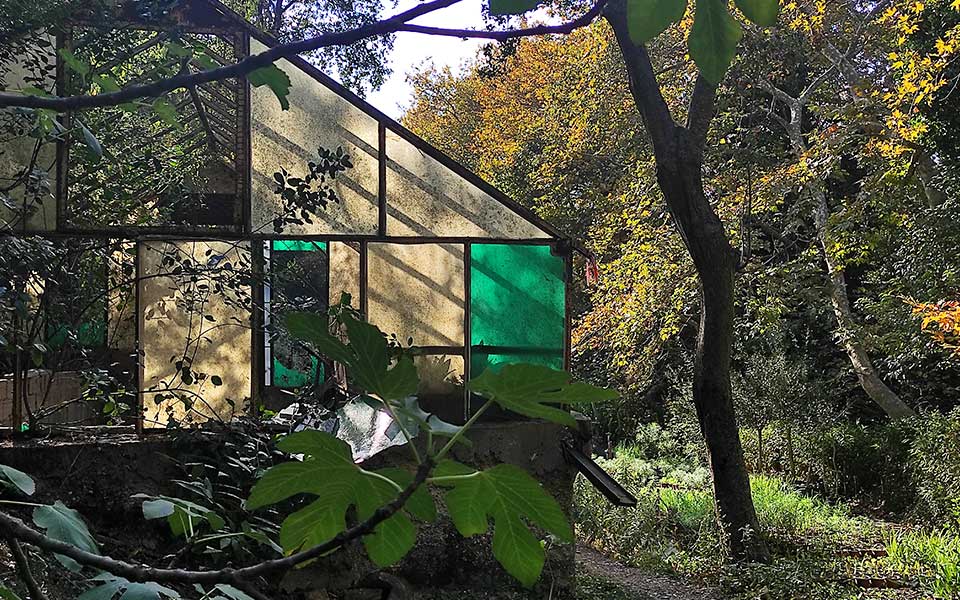
The plant house is like a beautiful garden within the forest.
© Pagona Lapsati
“Be careful not to step on the cyclamens. They are the first thing we meet on the path,” we are warned by Vassilis Perleros, a member of the environmental organization SOS Rematia. His wife Paulina and I are lost in conversation as we walk, relaxed. So we begin to watch our step and focus on our journey, which started at Aghia Triada church on Palia Penteli Square and will end at Aghia Marina church in Melissia, going through a part of Nea Penteli.
Alexandros Argyropoulos, vice-chair of SOS Rematia, has joined us. He was involved in the opening of this path, which runs along part of Penteli-Halandri Creek. As the group’s expert, he suggested that we not begin our descent from Davelis (or Amomon) Cave, as the route is more demanding.
If you have hiked before, you won’t need more than 1.5 hours at a relaxed pace to complete the walk. It took us 2.5 hours – it’s hard to keep up with the rhythm of veterans when you are a beginner. Also, we took a 20-minute break for snacks, and made several smaller stops to take photographs and appreciate the creek’s beautiful scenery.
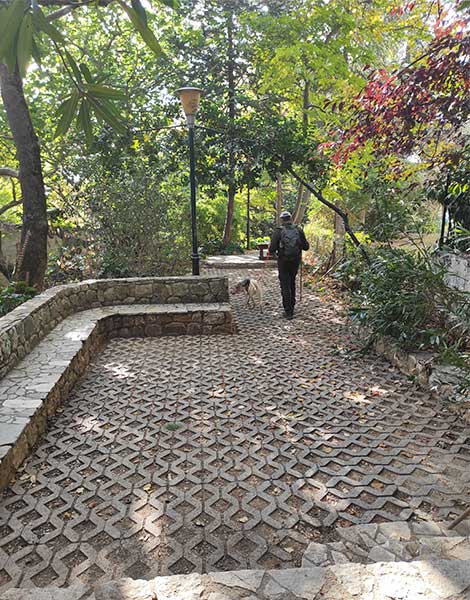
The entrance of the forested section
© Pagona Lapsati
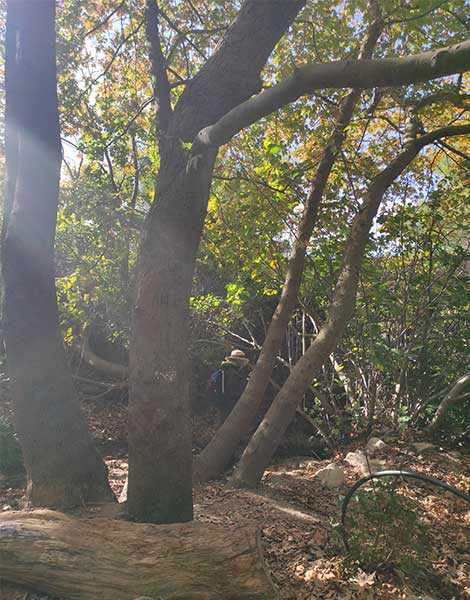
The sprawling branches of the giant plane tree create a fairy-tale setting.
© Pagona Lapsati
We are now at an altitude of 460 meters; we turn right on the road next to the Paliatso café which, after a few more turns, leads us to the entrance of the forested section.
Tip: Before you enter the forest, take a small detour and walk down to Penteli-Halandri Creek that passes under the stone bridge to your right. The giant plane tree branches that stretch out all around create a fairy-tale setting.
As soon as you get back on the road, turn right and look for the orange ribbons tied to the branches that signal the path – the seedlings that were planted after the last fire have started to grow, but are hard to follow in some parts.
“They planted a lot because they didn’t think that they would all end up growing and now the trees are all close together,” Vassilis, who is familiar with the creek’s biology, explains.
Every so often, black charred trunks appear among the young green pines, reminding us of fire’s destructive power. As we will see further below, they are not the only reminder around.
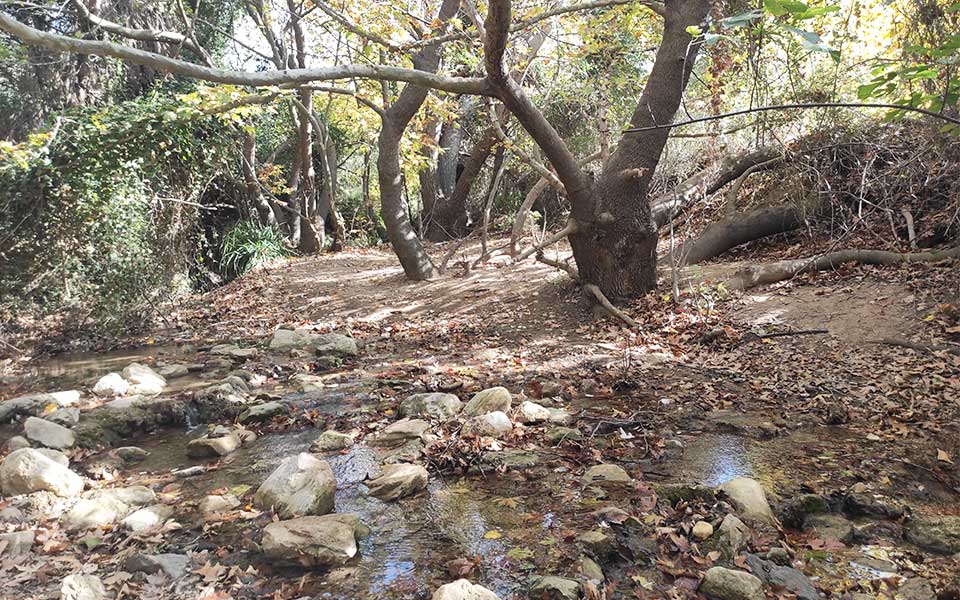
Traces of the ancient lithagogia (stone transport) track by the creek.
© Pagona Lapsati
After a short downhill course, the Nea Penteli settlement springs up ahead. The Public Power Corporation’s giant electricity pylons serve as a landmark for locating the traces of the ancient lithagogia (stone transport) track that were found straight down, by the creek – the road was used by the ancient Greeks to transport marble blocks from the Penteli quarry for the construction of the Parthenon as well as other important monuments.
As we continue our journey, we come across some buildings – most of them destroyed by the fires – and old fences that require our attention as they obstruct our path in some places.
The hike takes us through Miaouli, Navarinou and Skra streets –a built-up part of the mountain– and the Nea Penteli campsites (at an altitude of 383 meters) before reaching Alexandrou Panagouli Avenue, where we start walking alongside the creek. For the more ambitious, there is a harder path that goes through the slope, passes next to the former municipality offices, and leads directly to Miaouli Street.
As we arrive on Alexandrou Panagouli, Alexandros insists that we go and see the ruins of the famous Mavromatis kafeneio located inside the creek; it used to be a popular hangout for the residents of Penteli and the surrounding neighborhoods who went there to have a coffee or tsipouro. Now cloaked in vegetation, it is also occupied by peacocks and other animals.
On the other side of the creek, we see an abandoned small Athens Water Company pumping station, which covered the water supply needs of the locality before it was connected to the main water supply network.
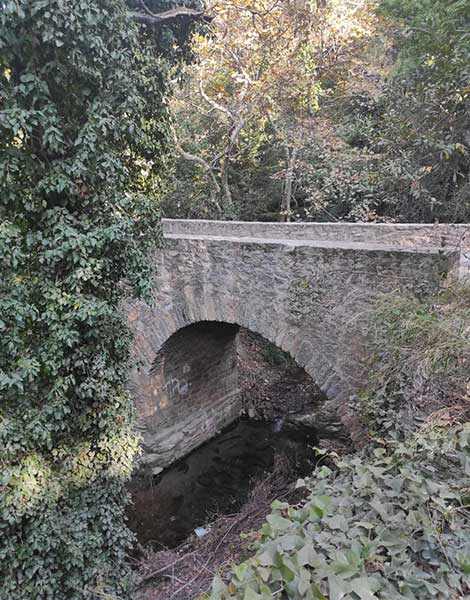
The single-arched stone bridge is located after the plant house.
© Pagona Lapsati
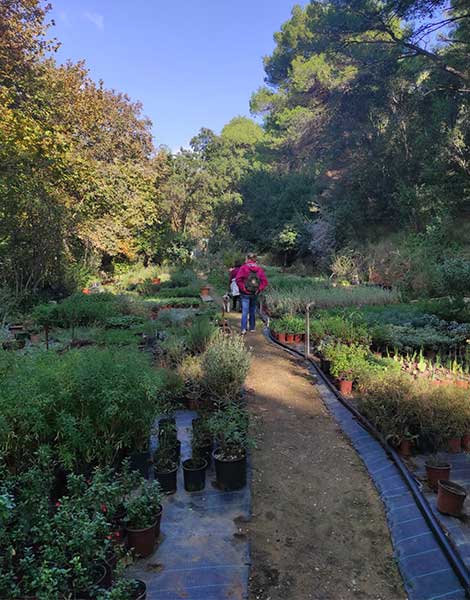
Τhe plant house.
© Pagona Lapsati
The section that goes from Alexandrou Panagouli Avenue to the Melissia neighborhood contains several secrets. As the path stretches mainly along the creek, little light gets through even on sunny days, and serves as a cool shelter for those who come here during the summer months.
The Vythoulas sign placed on the path catches my attention: It designates a two meter-deep natural pool in the middle of the creek –above Marathi Street – thought to be a diving spot for locals in the 1950s and 60s. Further down, we spot the 10 meter-long stone dam at the edge of Aristidou Street, a 1920 construction topped by a small waterfall.
On our way, we pass by a plant house – yes, the path crosses a plant house – in order to reach the single-arched stone bridge, on the border between the Vrilissia and Melissia neighborhoods, built in 1836 with funding from Sophie de Marbois-Lebrun, Duchess of Plaisance (the street is named after the Greek rendition of her name). The former served for the transport of marble used in the construction of the latter.
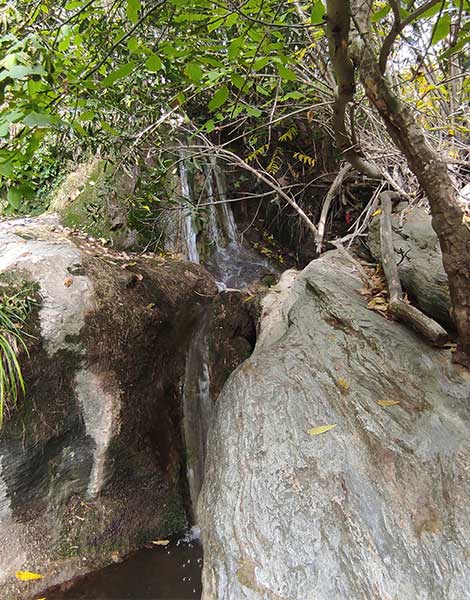
© Pagona Lapsati
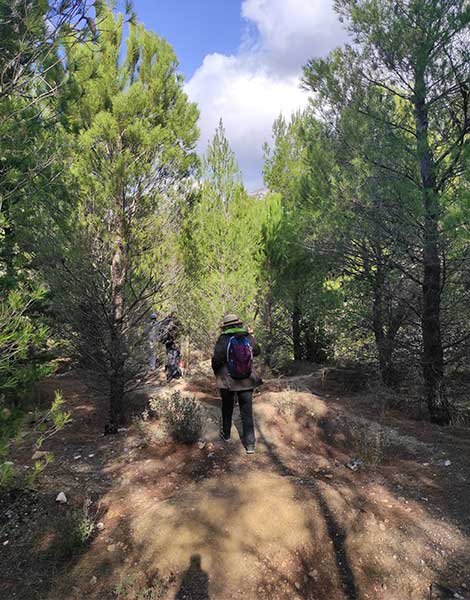
© Pagona Lapsati
The stone tanks and terraced fields we see along the path are evidence that people used to cultivate the land along the creek and use its water for irrigation. We also stumble upon an old building, which SOS Rematia has proposed be renovated as a snack bar.
Even the exit at Aghia Marina church hides secrets: Behind it, a beautiful walking path begins, which follows the creek from above and ends at Andrea Papandreou Street in Melissia. This is where our walking journey ends, and where the street meets the Aghios Silas stream.
The mapping out, signposting and clearing of the paths were carried out on the initiative of volunteers from environmental organizations such as Vrilissos and SOS Rematia among others.
As Argyropoulos highlighted, building more footbridges would make it easier for walkers to pass from one side to the other, thus facilitating access for more people.
The more you walk the route, the more you start to notice, recognize and enjoy the flora and fauna that inhabit the creek.
A stroll down one of the...
A nexus of Hellenic research, the...
Since 1928, this family-run wine taverna...
Discover five of Athens’ latest openings,...